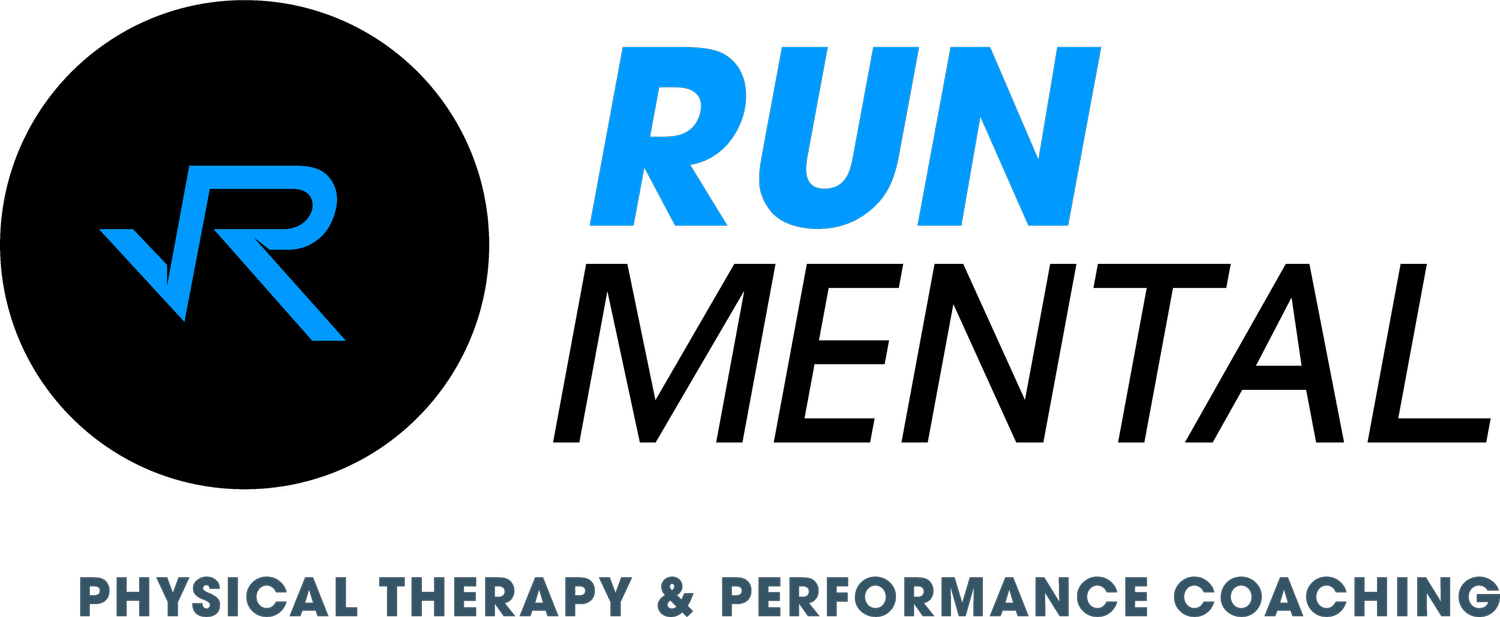3 Most Common Types of knee pain in runners
Originally published in the Pikes Peak Road Runners August 2022 issue of The Long Run.
Runners deal with knee pain. A lot! In fact, pain around the knee is the number one area that pain or injury develop in runners. (van gent 2007, Messier 2018) The most common areas I see clinically contributing to symptoms are the patellofemoral joint (knee cap), patellar tendon, and the Illiotibial band (ITB). The knee has a lot of force going through it while running, especially down hill, which tends to make the knee susceptible to the development of symptoms if there is an acute spike in training loads or outside circumstances inhibiting our readiness to train. (Willy 2016, Baggaley 2020). This will be a 4-part series where I’ll first start with this post by talking about each of these three areas and what they are. In each subsequent post I will talk about some solutions for each that often help in those I have worked with.
Patellofemoral Pain
Patellofemoral pain (PFP) presents as a dull ache on and/or around the patella (knee cap) in most cases. It is a diagnosis of exclusion meaning that all other things are ruled out prior to intervening under the assumption it is a true patellofemoral joint (PFJ) related issue.
In most cases, there is a large spike in training loads relative to prior weeks and months that precedes the onset of symptoms. This most frequently involves vert as the primary variable. Often, symptoms don’t occur until several weeks after the spike which can make it difficult to pinpoint what happened. Because of this keeping a training log becomes greatly beneficial as you or your healthcare provider can review it to see if your training habits were a contributing factor. I personally find this incredibly useful when we can pull up your Garmin/Strava data in real time to analyze. This increase in workload consequently results in a change of metabolic activity and increase in water content in and around the joint. These changes disrupt the homeostasis of the joint leading to an increase in sensitivity with further loading. (Dye 2005)
Patellar Tendinopathy
Patellar tendinopathy (PT) is a bit more straight-forward to identify compared to PFP for several reasons. Pain is typically localized to the base of the patella (upper portion of the tendon) or the tibial tuberosity (lower portion of the tendon). Interestingly, in runners the most common presentation is at the tibial tuberosity whereas jumping athletes such as volleyball or basketball players develop PT at the base of the patella typically. (Feretti 1986, Sarimo 2007) Additionally, when other structures such as the fat pad, are involved the pain and location can be more variable. Tendon related pain tends to be very localized on the tendon and predictable in that more load consistently causes more pain and lasts longer than less load.
Development of PT happens over an extended period of time with a gradual onset of symptoms. Often, there have been repeated bouts of higher training loads without sufficient recovery for the tendon specifically. Although muscles and your cardiovascular fitness may recover and improve rather quickly, generally in a matter of weeks, tendons are very slow responders taking months to really change and adapt to training loads. Because of this, runners must be mindful of a slow progression in training volume, intensity, and vert. Descents are particularly relevant as downhill running increases stress to the knee by as much as 50% on a 5% decline. Think running down Rampart Range Road to Balanced rock in Garden of the Gods. (Baggaley 2020)
Illiotibialband Syndrome
Similar to PT, iliotibial band syndrome (ITBS) is relatively straight forward in its diagnosis as pain is on the outer portion of the knee where there aren’t many other tissues to consider that may be sensitized. Certainly, there are more sinister conditions to rule out initially as with any episode of pain/injury, but these are much less common for this area and correspond with other factors and pain behavior. The ITB is a long and tough fibrous fascial tissue the spans from the side of the pelvis, down the outer thigh, and inserts to the outer portion of the knee. It functions and behaves much like a tendon when sensitive. Consequently, we end up treating it very similarly, but that is for a future article.
Historically, ITBS was thought to develop due to friction that is occurring with movement where the ITB is sliding over the insertion(s) causing irritation. This was believed to sensitize the underlying well innervated fatty tissue underneath with cyclical loading such as during running. (Renne 1975) However, this has been questioned more recently. When looking at the anatomy and observing the biomechanics of the ITB specifically, it appears almost impossible that the ITB could be gliding over the insertions and underlying tissues. (Fairclough 2006) What has been proposed instead is that the tensioning of the ITB during use creates an illusion of movement while under imaging but is ultimately creating varying compressive forces on the underlying tissues thus sensitizing them after prolonged durations they aren’t accustomed to. I hope you are beginning to seem a theme here…
Finally, and not to complicate things more, we must also consider factors outside of the knee and training. Things such as depression, anxiety, fear avoidance, poor sleep, or just high stress levels overall can contribute to the tissues being more sensitive to stimuli as well and hinder progress with rehab if not addressed. (Piva 2009, Piva 2009) These are things your healthcare provider should be screening for and have great referrals to connect you with to help in those domains. Knee pain in running can become a big deal as it can really bring your training to a halt. Though it is common, it doesn’t need to be something you live with. Despite the complexity of pain and injury, in most cases there are quite simple interventions we can utilize that help to get you back to running strong and confident! Stay tuned…
If you have questions or would be interested in working with me to help with an injury you’re dealing with, I would be happy help! You can check out out page on our physical therapy services here. You can also schedule a free phone consultation with the button below.
Happy running!



